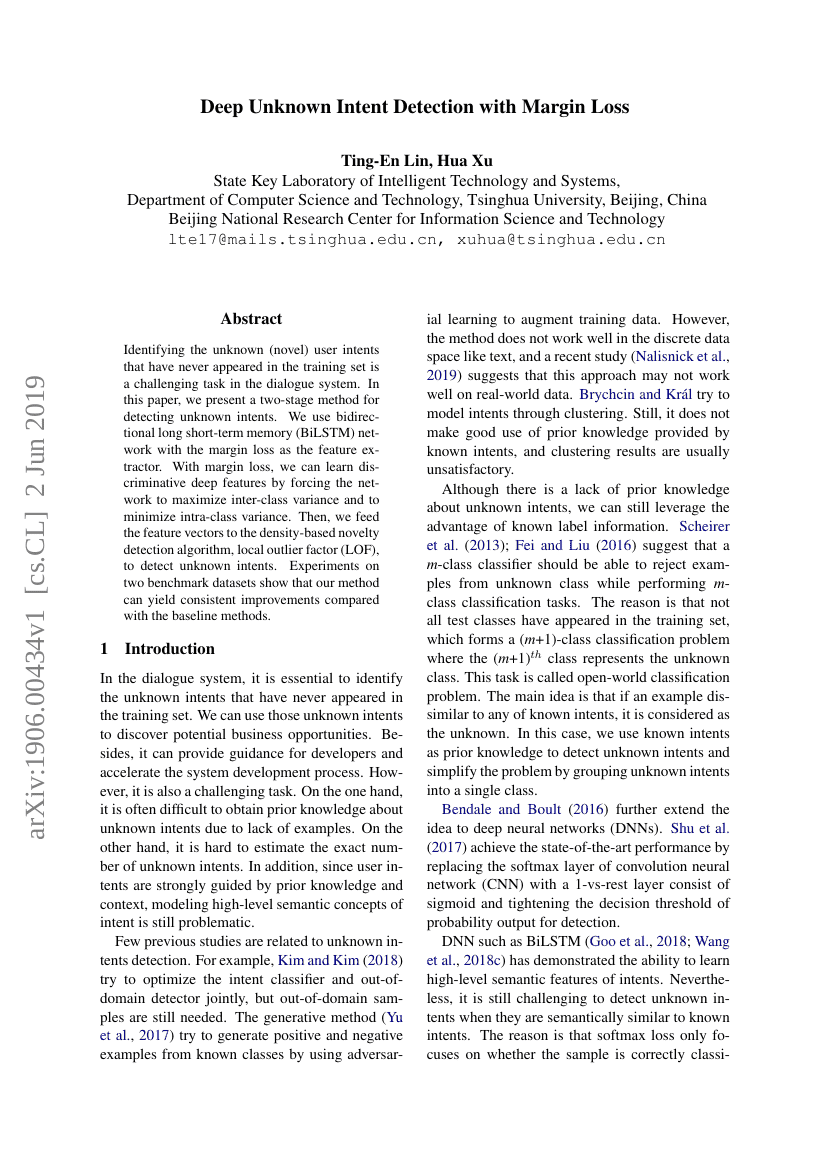Command Palette
Search for a command to run...
Ting-En Lin; Hua Xu

Abstract
Identifying the unknown (novel) user intents that have never appeared in the training set is a challenging task in the dialogue system. In this paper, we present a two-stage method for detecting unknown intents. We use bidirectional long short-term memory (BiLSTM) network with the margin loss as the feature extractor. With margin loss, we can learn discriminative deep features by forcing the network to maximize inter-class variance and to minimize intra-class variance. Then, we feed the feature vectors to the density-based novelty detection algorithm, local outlier factor (LOF), to detect unknown intents. Experiments on two benchmark datasets show that our method can yield consistent improvements compared with the baseline methods.
Code Repositories
Benchmarks
| Benchmark | Methodology | Metrics |
|---|---|---|
| open-intent-detection-on-atis-25-known | LMCL | F1: 0.696 |
| open-intent-detection-on-atis-50-known | LMCL | F1: 0.396 |
| open-intent-detection-on-snips-25-known | LMCL | F1: 0.792 |
| open-intent-detection-on-snips-50-known | LMCL | F1: 0.841 |
| open-intent-detection-on-snips-75-known | LMCL | F1: 0.788 |
Build AI with AI
From idea to launch — accelerate your AI development with free AI co-coding, out-of-the-box environment and best price of GPUs.